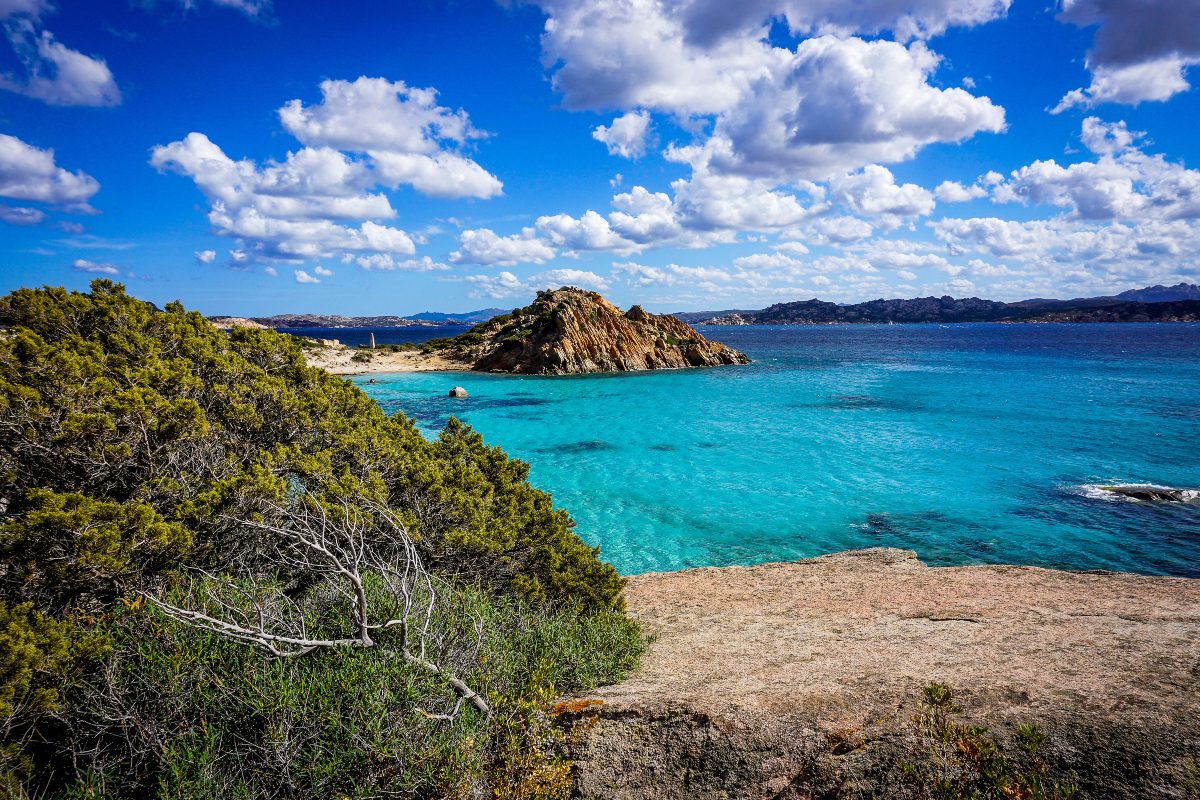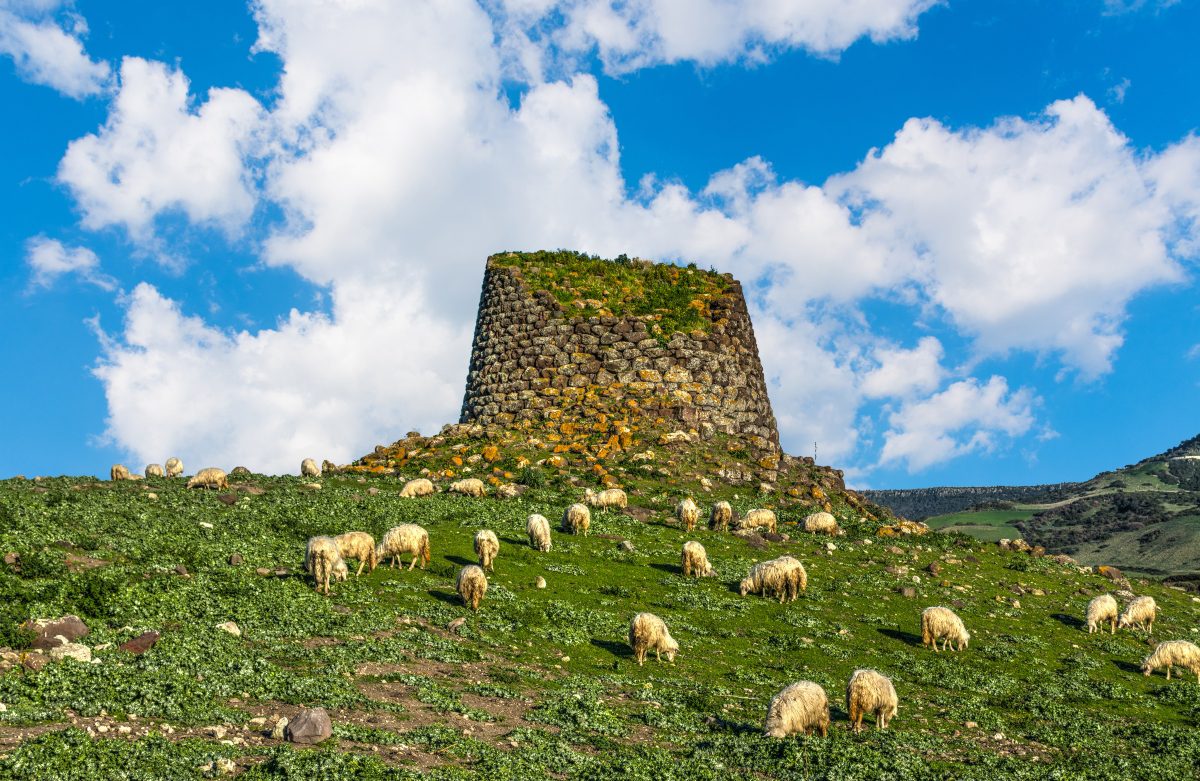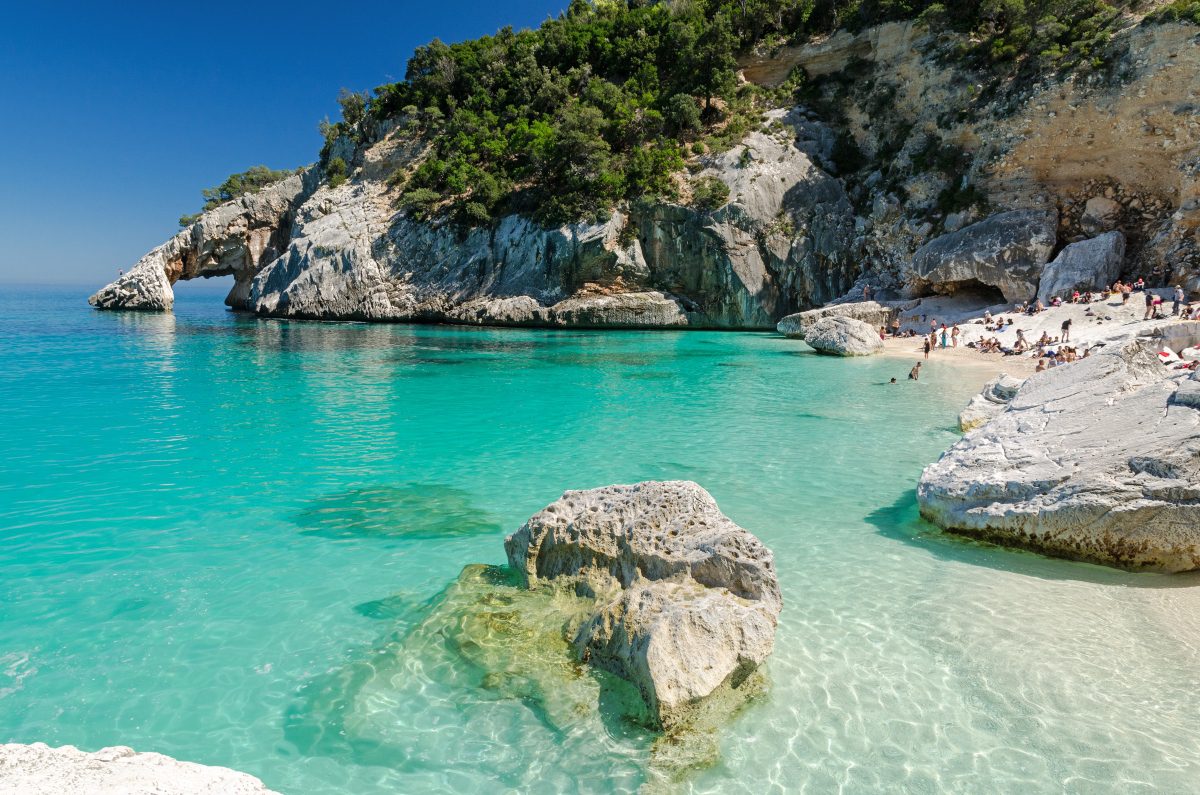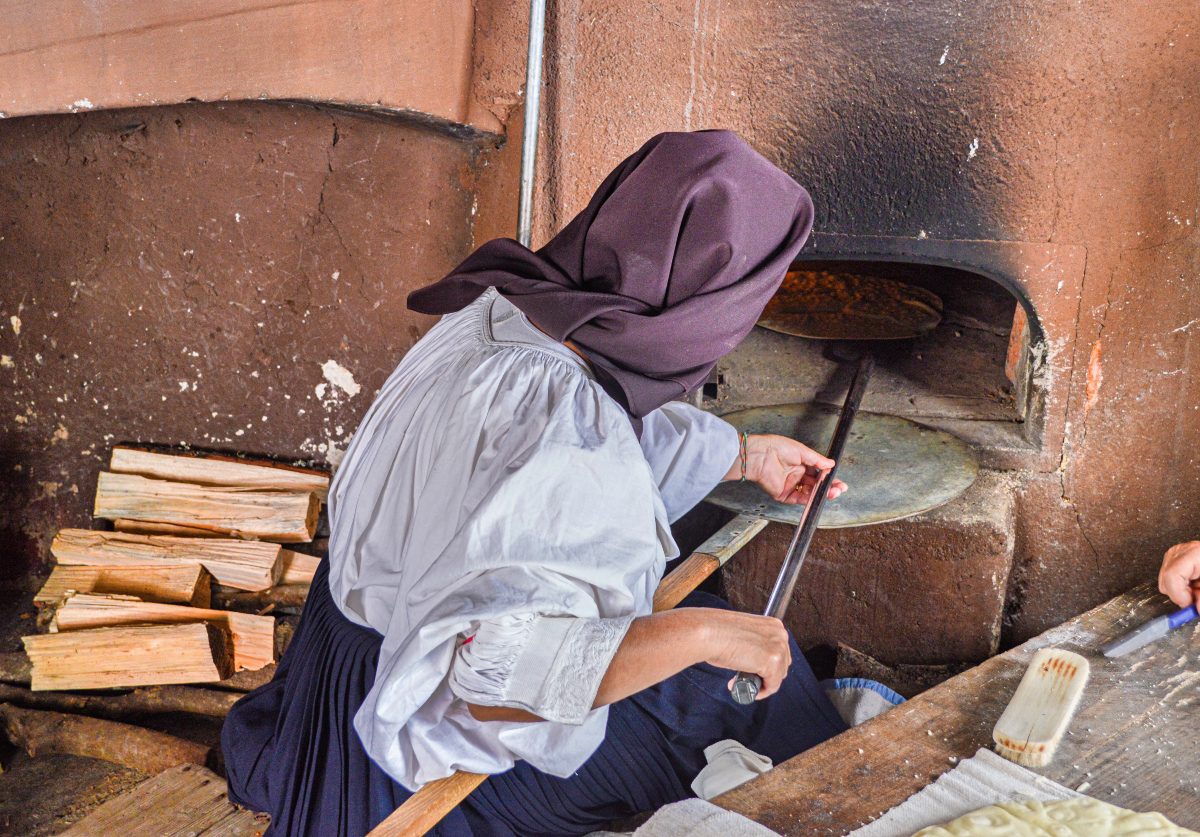Why Families Love Sardinia: An Italian Isle Unlike any Other
- September 24, 2022
- 7 Min Read
Sardinia is quite simply different from anything else you will experience in Italy. The way of life on this island, nestled in the Tyrrhenian Sea off the west coast of the mainland, has remained largely unchanged over the ages — the focus here is on agriculture and a largely unpretentious, simple way of life with family at its center. Festivals are also a huge part of the culture, and it is not uncommon to find pockets of families celebrating and feasting together on any given Sunday.
What makes Sardinia a particularly unique destination is that despite being part of Italy, it most definitely has its own culture, history and even language. Sardinian, or Sardo, is widely spoken among the one and a half million inhabitants, and the language varies significantly by area, with varying degrees of linguistic influences including Spanish, Catalan, Latin and Arabic.

While Sardinia (Sardegna in Italian) is best known for its stunning water and pristine beaches, it is a diverse destination that offers everything from a port city and unspoiled terrain in the south to active pursuits in the central region and a bit of a jet-set vibe in the northeast. You can drive between the northern and southern ends of the island in about two and a half hours, but the central region and east coast are quite mountainous.
Sardinia is a seasonal destination and the best times to visit are from May to October. Access to the island is quite easy, with plenty of flights from mainland Italy as well as various European hubs, including those on low-cost carriers. Most flights arrive at Cagliari in the south or Olbia in the north. In terms of scale, Sardinia is quite sizable, weighing in as the second largest Mediterranean Island after Sicily. Families should consider a minimum of four nights here, but you could easily spend a week or more.

Where to Go and What to Do in Sardinia with Kids
Northern Sardinia
If Sardinia has bubbled up on your radar, it is likely for the northern coast around the town of Porto Cervo and the Costa Smerelda, which has been a firm European holiday favorite for years. Although the northern coast is a known draw, it does not define the rest of Sardinia. Allow a few days to enjoy the tony atmosphere around the Costa Smerelda, with its array of luxe accommodations, restaurants and nightlife, but leave enough time to appreciate the rest of the island’s distinctly different vibe.
La Maddalena, an archipelago of more than 60 tiny islands off the northeast corner of Sardinia, is an absolute must-see. Families will be awed by the clear turquoise water, which almost seems to defy reality, and it is an incredibly stunning place to go yachting and boating. Plan to spend one or more days on the water here.
Sit back, relax and leave the planning details to us.
Just send a quick request, and we’ll pair you with an expert Travel Advisor who can design and book your dream trip: a custom itinerary, private guides, immersive local experiences and handpicked hotels. Click to get started!

Central Sardinia
Sardinia’s mid-section is spectacular in and of itself, thanks to its mountainous terrain and dramatic scenery. Goat herding and cheese-making are at the core of local farming and agriculture. Families will enjoy “peeking behind the curtain” at the real heart of Sardinia by getting to know some of the welcoming locals, perhaps through the artisanal food and wine made here. A plethora of ancient ruins dating back to pre-medieval times are ripe for exploration. This part of Sardinia is less about tourist hot spots and more about experiencing a true slice of rural life.
Central Sardinia also boasts a slew of trekking, biking and extreme mountain sports for those seeking adventure. Fonno, known as the highest village in Sardinia, is a local favorite and a well-traveled path for hikers. Families should also keep an eye out in this region for Nuraghe, the bronze bee-hive shaped prehistoric ruins unique to Sardinia. Santu Antine and Losa are popular mid-island spots, but there are also excellent examples at Prisgiona just south of Porto Cervo in the north and Arrubiu just north of Cagliari in the south.

TIP: One of our favorite mid-island properties is Su Gologone in Bargagia. What started as a restaurant in 1967 has become an ode to Sardinian culture, and a stay here offers a chance to immerse your crew in Sardinian hospitality. Families will be soothed by nature, local art and cultivated spaces like the Terrace of Wishes overlooking a juniper tree grove. It’s also within day-trip distance of the Golfo di Orosei on the eastern coast, home to a string of breathtaking coves and beaches that are well worth exploring by boat.
Visiting the middle of the island is a great chance to slow down your pace and savor the local quality of life. Sardinia is known as a Blue Zone, defined by researcher Dan Buettner in the early 2000s as one of five areas around the globe where residents tend to live considerably longer than in other areas. These spots are known for their high numbers of centurions (residents ages 100 and older) and Sardinia has the distinction of being the one place with a similar number of both male and female centurions.
We recommend working with a guide to make the most of your time in this central region and to delve into the local culture as well as navigate the driving and countryside. Although there are some bigger roads, there are many smaller ones that veer into areas that don’t have cell coverage, and you will want to know where you are going. Our Family Travel Advisors can also organize memorable experiences like an afternoon spent with a goat herder, culminating in a shared lunch and visit over freshly made Sardinian pecorino cheese in a traditional hut.

Southern Sardinia
The southern part of Sardinia is anchored by the capital city of Cagliari, home to about half a million people. This port town has its own culture, shopping, restaurants and beaches (Poetto is especially popular), and families can easily spend a few days based here. Cagliari is divided into four distinct districts: Castello, Villanova, Stampace and La Marina, each with its own sites, museums and, of course, tasty foods. Keep an eye out in Cagliari for the iconic pink flamingoes that nest here. Art fans will also want to seek out the village of San Sperate, located north of Cagliari and lauded for its many museums and outdoor works of art.
TIP: Italy is known for its regionally distinct and craveable food and wine, and Sardinia is no different. Local specialties include the famous thin, crispy bread called pane carasau, as well as suckling pig (known as porcheddu), mint- and potato-studded culurgiones dumplings, octopus salad, and bottarga, the dried mullet roe that hails from the western town of Cabras and is often mixed into pastas and sauces. Parents will look forward to savoring these delicacies alongside Sardinia’s famous white Vermentino and iconic Cannonau (French Grenache) reds. Many claim that Sardinia’s wine and food contribute greatly to its residents’ longevity.
Unlock our free guide: 6 Easy Steps to a Year’s Worth of Travel
Time flies, but memories last forever. Our simple 6-step process helps you make the most of precious vacation family time during the years with kids at home. Click to get your download!

West of Cagliari, you’ll find some wild and beautiful beaches in and around the towns of Pula and Chia. These spots are quite spectacular, but the tradeoff for this unspoiled beauty is that there aren’t many accommodations. Families should know that amenities may not be at the level of American expectations, but that is part of the joy of “discovering” this area and making it part of your family’s journey. One exception: Forte Village Resort in Pula, a CB! staff favorite — this expansive, opulent beachside property is paradise for all ages.
Dividing Your Time
If your family has 4 or 5 days to spend in Sardinia, we suggest choosing between the north or south, either enjoying the big, wide beaches and raw landscapes around Cagliari or basing yourself in the luxurious Costa Smerelda. If you are willing to devote a week or more to Sardinia, you will not be disappointed. This amount of time will allow for exploration of both the northern and southern coasts as well as a couple of nights in the middle of the Island.
Regardless of the length of your stay, Sardinia will leave families forever changed by its awe-inspiring beaches, distinctive local food and wine and singular culture.
Relevant Links:
Browse all family-friendly accommodations and destinations in Italy on Ciao Bambino
52 things to know before traveling to Italy with kids
Endless ways for families to play at Sardinia’s beachside Forte Village Resort
Off-the-beaten-path Italy: New places to explore with kids
Where to go next in Italy: A melting pot of cultures in Sicily
Editor’s note: This post was accurate when published. We advise checking independently for the latest information and updates. Ciao Bambino does not accept responsibility or liability for any errors or omissions in, or for any actions taken based on, the information presented.


 travel recommendations, inspiring adventures, and exclusive travel offers
travel recommendations, inspiring adventures, and exclusive travel offers